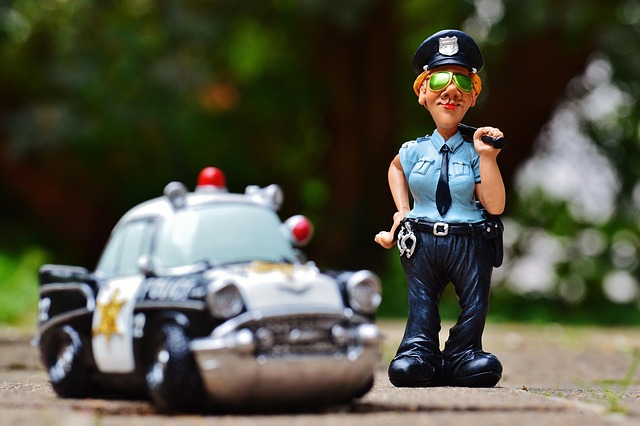Register Your Car: Step-by-Step California DMV VIN Verification
Looking to register your car in California? This comprehensive guide will walk you through the process step-by-step. In California, understanding the registration requirements is crucial before diving…….

Looking to register your car in California? This comprehensive guide will walk you through the process step-by-step. In California, understanding the registration requirements is crucial before diving into the paperwork. You’ll need specific documents and must pass a Vehicle Identification Number (VIN) verification at your local Department of Motor Vehicles (DMV). Ensure everything is in order to avoid delays and pay the necessary fees for a smooth car registration experience.
- Understand California Car Registration Requirements
- Gather Necessary Documents for Car Registration
- Visit Your Local DMV for Vehicle Registration
- Complete Vehicle Identification Number (VIN) Verification
- Pay Car Registration Fees and Receive Your License Plate
Understand California Car Registration Requirements

Before registering your car in California, it’s crucial to understand the state’s specific requirements for car registration. The California Department of Motor Vehicles (DMV) mandates that all vehicles operating within the state be properly registered and insured. One key component of this process is a thorough vehicle identification number (VIN) verification. This involves ensuring the VIN on your car matches the information in the DMV’s records, which can be done through a mobile VIN verifier or other approved methods.
Additionally, you’ll need to provide proof of insurance, complete necessary paperwork, and pay the associated fees. The process typically requires visiting a local DMV office with your vehicle’s title, registration documents from the previous state (if applicable), and valid identification. Alternatively, many services now offer mobile VIN inspection and registration assistance, making it more convenient for California residents to meet these requirements.
Gather Necessary Documents for Car Registration

Before you start the registration process, it’s crucial to gather all the essential documents for car registration in California. This includes your vehicle’s registration certificate from the previous state, a valid driver’s license, proof of insurance, and a completed Vehicle Registration Application form (DMV Form DR-426). Additionally, you’ll need to undergo a DMV VIN verification process, which can be efficiently handled by using a mobile vin verifier for accurate and quick results.
During this preparation, ensure that your vehicle passes the state’s safety and emissions inspections if required. You may also opt for a mobile vin inspection service to simplify the paperwork process and verify your car’s identity through its unique VIN (Vehicle Identification Number). This step is vital in ensuring smooth registration without any delays or complications.
Visit Your Local DMV for Vehicle Registration

To register your car in California, one of the essential steps is to visit your local Department of Motor Vehicles (DMV) office for vehicle registration. This process involves several checks and verifications to ensure that your vehicle complies with state regulations. The DMV will require you to present important documents such as proof of identity, ownership, and insurance.
During your visit, a representative will guide you through the registration process, which includes a critical step known as VIN (Vehicle Identification Number) verification. This can be efficiently done using mobile vin verification tools or a vin inspector to ensure that the VIN on your vehicle matches the information in the DMV’s system, enhancing the accuracy and security of the entire registration process.
Complete Vehicle Identification Number (VIN) Verification

After gathering all necessary documents, it’s crucial to complete a Vehicle Identification Number (VIN) verification process through the DMV. This step is essential to ensure the vehicle’s authenticity and history. A mobile VIN verifier can be a convenient option for many, allowing for on-site inspections and saving time. Alternatively, you can conduct a vin inspection at a designated DMV office.
The process involves cross-referencing the VIN with various databases to retrieve detailed information about the vehicle’s past, including ownership changes, accident history, and maintenance records. This step is not just a formal requirement but also safeguards against potential fraud, ensuring that both the buyer and seller are protected.
Pay Car Registration Fees and Receive Your License Plate

After completing your car’s registration application at the DMV, the next step is to pay the required fees for vehicle registration. This process varies slightly depending on whether you’re registering a new or used car. For a new car, you’ll typically pay the base registration fee plus any additional taxes and fees associated with your vehicle’s make and model. Used cars may have different fee structures based on their age, so be sure to check with the DMV for current rates.
Once your payment is processed, you will receive your license plate. In California, these plates are unique and typically include a combination of letters and numbers. They must be displayed prominently on both the front and rear of your vehicle. It’s important to note that proper display of your license plate is not only required by law but also serves as a vital component of the DMV’s vin verification process, ensuring the authenticity of your vehicle’s registration. Consider using a mobile vin verifier or undergoing a mobile vin inspection to streamline this step, making it easier and faster to get your plates and officially register your car.
Registering a car in California involves understanding state requirements, gathering essential documents, and visiting your local DMV. After completing the VIN verification process, you’ll pay the necessary fees and receive your license plate, ensuring your vehicle is legally registered and ready to hit the road. Remember, proper registration is crucial for both safety and legal compliance, so make sure to follow these steps carefully.







